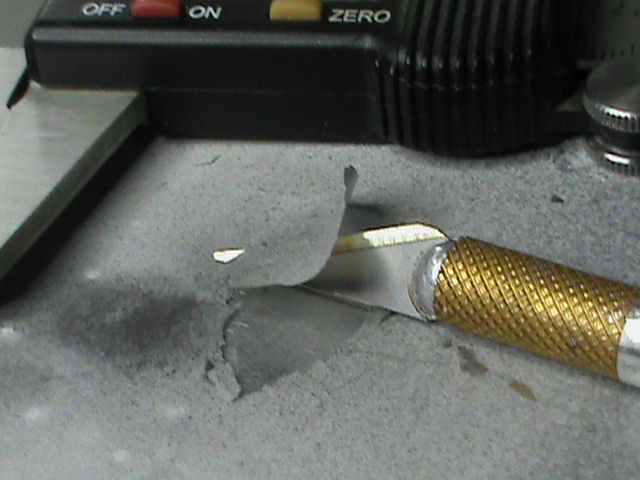The answer seems to be yes.
I just finished a couple of runs to test how ABS behaves when electrospun. To be honest, I can't call it an scientific test because I made a little goof. I set black ABS in acetone last night but didn't get the lid on right, and by this morning a noticeable amount had evaporated. So I can't give you an answer on what the actual ratio was but I'd guess it about 50/50.
I started with a plate to emitter distance of 120mm and the power at 21kV. All went well, with only a little buildup of dried fibers clinging to the emitter at times.
I then moved the plate to 40mm of the emitter and 18.kV. That went even better, with a lot less fibers taking 'flyers' around the chamber.
For the last test I moved the plate to 25mm and the power at 12.kV. Not so well there: it started to spark, and for a few seconds it had a nice pretty sustained spark between the emitter and the plate. That's the dark spot on the picture below.
What I wound up with was a mat that my micrometer tells me is about .07mm thick. It is very even in the entire landing area. To take these pictures I should have waited a bit more to make sure all the solvent was gone, but of course I didn't do that. Lol. It does crumble a bit if I try, but it's getting better the longer I let it sit.
I really need to come up with a scope of some kind to get a better look (and pictures) of the fibers within the mat. I CAN tell you they are real small, but have a high aspect ratio, i.e. they are pretty long compared to their width. If I could see them better I'm sure they would be laid out in a horizontal mat arraigned in random directions. To get them lined up all in the same direction will have to wait until we get as far as building a rotating drum for them to land on.
All in all this test really isn't all that useful or mean a whole lot other than I answered the question of whether ABS could be pulled in this thing. But the smoothness of the mat makes me wonder if I couldn't put a 3D printer part in there and get the fibers to coat it. If that works, would they land on the parts ridges, or cover over the valleys between layers? Guess I'll be finding out soon.
One last thing before I get back to work. I'm not sure what use it would really be, but I'm starting to wonder if this thing can't be developed far enough in a few years to print entire 3D objects, in a micro scale, with good detail. I'm sure not close to that yet, but if you watched it pulling the fibers you'd wonder too. They are TINY, with a real nice aspect ratio. The detail would be amazing!

 Douglas Miller
Douglas Miller
Discussions
Become a Hackaday.io Member
Create an account to leave a comment. Already have an account? Log In.